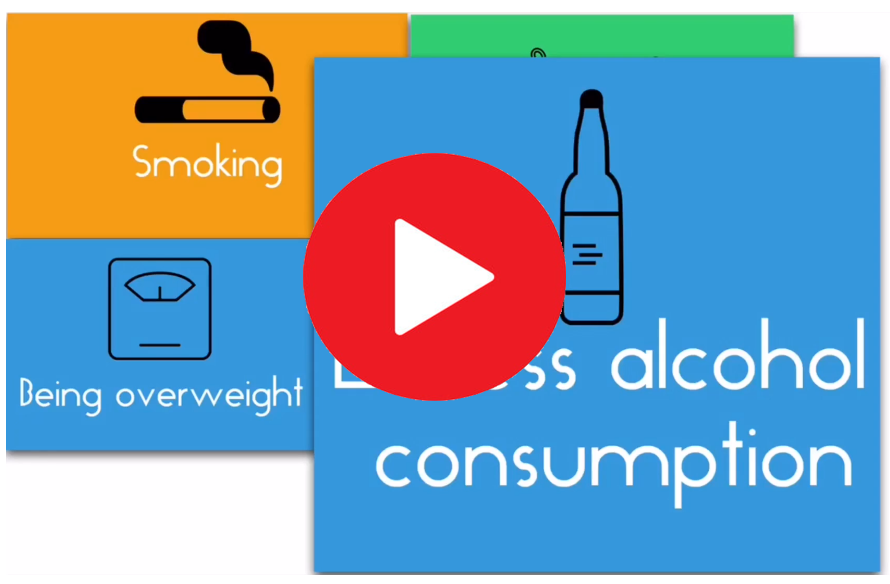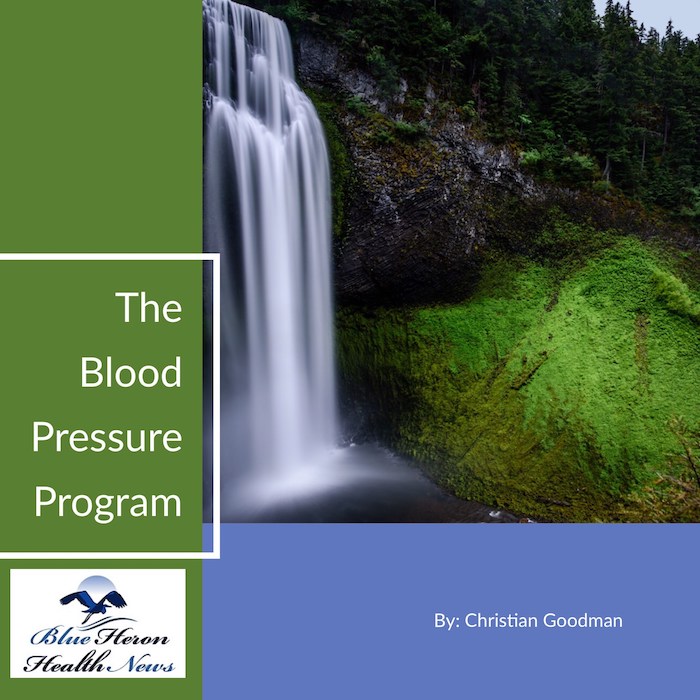The Bloodpressure Program™ By Christian Goodman The procedure is a very basic yet effective method to lessen the effects of high blood pressure. To some people, it sounds insane that just three workouts in a day can boost fitness levels and reduce blood pressure simultaneously. The knowledge and research gained in this blood pressure program were really impressive.
Combination Therapy for Hypertension
Combination therapy is a widely accepted strategy in the management of hypertension, particularly when single-drug therapy (monotherapy) fails to achieve target blood pressure levels. Combining two or more antihypertensive agents can provide more effective blood pressure control, reduce the risk of cardiovascular events, and minimize side effects by using lower doses of each drug. This guide explores the rationale for combination therapy, the benefits, common drug combinations, and considerations for its use in managing hypertension.
The Rationale for Combination Therapy
1. Enhanced Blood Pressure Control
- Multi-Mechanistic Approach: Hypertension often results from multiple physiological factors, including increased peripheral resistance, elevated cardiac output, and excessive fluid retention. Combination therapy targets different mechanisms of blood pressure regulation, providing a more comprehensive approach to lowering blood pressure.
- Improved Efficacy: When one drug is insufficient to control blood pressure, adding another with a complementary mechanism of action can enhance overall efficacy. This approach is often more effective than simply increasing the dose of a single medication.
2. Lower Doses and Reduced Side Effects
- Minimizing Dose-Related Side Effects: By using lower doses of two or more drugs, combination therapy can reduce the risk of dose-dependent side effects associated with higher doses of monotherapy. For example, lower doses of diuretics combined with other antihypertensives can control blood pressure without causing significant electrolyte imbalances.
- Balanced Efficacy and Tolerability: Combining drugs with different side effect profiles can help balance efficacy with tolerability, improving patient adherence to treatment.
3. Addressing Resistant Hypertension
- Overcoming Resistance: Resistant hypertension is defined as blood pressure that remains above target levels despite the use of three or more antihypertensive agents, including a diuretic. Combination therapy is essential in these cases to achieve blood pressure control and reduce the risk of cardiovascular events.
Benefits of Combination Therapy
1. Synergistic Effects
- Complementary Mechanisms: Combining drugs that act on different pathways in blood pressure regulation can produce synergistic effects, leading to more significant blood pressure reductions. For instance, an ACE inhibitor can be combined with a calcium channel blocker or diuretic to address different aspects of hypertension.
- Blunting Counter-Regulatory Mechanisms: Some antihypertensive drugs activate compensatory mechanisms that can counteract their effects. For example, diuretics may trigger the RAAS, leading to increased angiotensin II and aldosterone levels. Combining a diuretic with an ACE inhibitor or ARB can counteract this response, enhancing blood pressure control.
2. Increased Likelihood of Achieving Target Blood Pressure
- Better Goal Attainment: Studies have shown that combination therapy increases the likelihood of achieving target blood pressure levels compared to monotherapy. This is particularly important in high-risk patients, such as those with diabetes, chronic kidney disease, or a history of cardiovascular events.
3. Reduction in Cardiovascular Risk
- Lowering Cardiovascular Events: Effective blood pressure control with combination therapy reduces the risk of heart attack, stroke, heart failure, and death from cardiovascular causes. The benefits are particularly pronounced in patients with comorbid conditions or those at high cardiovascular risk.
- Renal Protection: In patients with chronic kidney disease, combination therapy can help slow the progression of kidney damage by reducing blood pressure and proteinuria (excess protein in the urine).
4. Improved Adherence
- Simplified Regimens: Fixed-dose combination pills, which contain two or more antihypertensive agents in a single tablet, can simplify treatment regimens, improving patient adherence. This is particularly beneficial for patients with complex medication schedules or those who struggle with pill burden.
- Fewer Pill Burdens: By reducing the number of pills a patient needs to take daily, fixed-dose combinations can reduce forgetfulness and improve adherence, leading to better long-term blood pressure control.
Common Combinations in Hypertension Therapy
Several drug combinations are commonly used in clinical practice, each targeting different mechanisms of blood pressure control. The choice of combination depends on patient characteristics, comorbidities, and the specific blood pressure target.
1. ACE Inhibitor or ARB + Calcium Channel Blocker
- Mechanism: This combination is effective because ACE inhibitors or ARBs reduce angiotensin II levels, leading to vasodilation and reduced blood volume, while calcium channel blockers relax vascular smooth muscle, leading to further vasodilation.
- Clinical Use: It is often used in patients with diabetes, chronic kidney disease, or high cardiovascular risk. This combination is particularly effective in reducing blood pressure and protecting against cardiovascular events.
- Examples: Lisinopril + amlodipine, valsartan + amlodipine.
2. ACE Inhibitor or ARB + Diuretic
- Mechanism: ACE inhibitors or ARBs reduce RAAS activation, while diuretics reduce blood volume by promoting sodium and water excretion. The combination counters the compensatory increase in renin activity that can occur with diuretics alone.
- Clinical Use: This combination is particularly beneficial in patients with heart failure, chronic kidney disease, or resistant hypertension. It also helps mitigate the potassium loss associated with diuretic use.
- Examples: Enalapril + hydrochlorothiazide, losartan + hydrochlorothiazide.
3. Beta-Blocker + Diuretic
- Mechanism: Beta-blockers reduce heart rate and cardiac output, while diuretics decrease blood volume, leading to a synergistic reduction in blood pressure. This combination can be effective in managing hypertension with coexisting conditions like heart failure or post-myocardial infarction.
- Clinical Use: This combination is often used in patients with a history of heart disease or those with high sympathetic tone (e.g., stress-related hypertension).
- Examples: Atenolol + chlorthalidone, metoprolol + hydrochlorothiazide.
4. Calcium Channel Blocker + Diuretic
- Mechanism: Calcium channel blockers induce vasodilation by blocking calcium entry into vascular smooth muscle cells, while diuretics reduce fluid volume. This combination can be particularly effective in elderly patients or those with isolated systolic hypertension.
- Clinical Use: It is often used in patients who do not tolerate ACE inhibitors or ARBs, or when additional blood pressure control is needed.
- Examples: Amlodipine + hydrochlorothiazide.
5. Beta-Blocker + Calcium Channel Blocker
- Mechanism: Beta-blockers decrease heart rate and contractility, while non-dihydropyridine calcium channel blockers (e.g., verapamil, diltiazem) also reduce heart rate and cause vasodilation. The combination provides strong control of heart rate and blood pressure.
- Clinical Use: This combination is useful in patients with angina, arrhythmias, or high blood pressure that is not adequately controlled with either drug alone.
- Examples: Metoprolol + verapamil, bisoprolol + amlodipine.
Considerations in Combination Therapy
While combination therapy offers significant benefits, it also requires careful consideration to optimize treatment outcomes and minimize risks.
1. Patient-Specific Factors
- Comorbid Conditions: The choice of drug combination should be tailored to the patient’s comorbidities. For example, ACE inhibitors or ARBs are preferred in patients with diabetes or chronic kidney disease, while beta-blockers may be favored in patients with heart failure or post-myocardial infarction.
- Ethnicity: Certain combinations may be more effective in specific populations. For instance, calcium channel blockers and diuretics are particularly effective in African American patients, who may have a lower response to RAAS inhibitors.
- Age: Older patients may benefit more from combinations like calcium channel blockers with diuretics, especially for managing isolated systolic hypertension.
2. Drug Interactions and Side Effects
- Risk of Hyperkalemia: Combining ACE inhibitors or ARBs with potassium-sparing diuretics can increase the risk of hyperkalemia, particularly in patients with chronic kidney disease. Monitoring potassium levels is essential.
- Hypotension Risk: Combining multiple antihypertensives can increase the risk of hypotension, especially in elderly patients or those with autonomic dysfunction. Starting with lower doses and titrating gradually can help minimize this risk.
- Renal Function Monitoring: In patients with kidney disease, combinations that affect the RAAS (e.g., ACE inhibitor + ARB) require close monitoring of renal function to prevent acute kidney injury.
3. Fixed-Dose Combinations
- Simplifying Treatment: Fixed-dose combination pills, which combine two or more antihypertensive agents in a single tablet, can simplify treatment regimens, improve adherence, and enhance blood pressure control.
- Cost Considerations: Fixed-dose combinations can reduce the overall cost of medication, particularly if they replace the need for multiple individual prescriptions.
- Tailoring Therapy: While fixed-dose combinations are convenient, they may limit the flexibility of dose adjustments. Providers need to balance convenience with the need for personalized dosing.
4. Monitoring and Follow-Up
- Regular Blood Pressure Monitoring: Patients on combination therapy should have their blood pressure monitored regularly to assess the effectiveness of the regimen and make necessary adjustments.
- Side Effect Management: Ongoing follow-up is essential to monitor for side effects, particularly when starting or adjusting combination therapy. Patients should be educated on what to watch for and when to seek medical advice.
- Patient Education: Educating patients about the importance of adherence to combination therapy, potential side effects, and lifestyle modifications is critical for long-term success.
Conclusion
Combination therapy is a cornerstone in the management of hypertension, offering enhanced efficacy, better tolerability, and a higher likelihood of achieving target blood pressure levels compared to monotherapy. By using two or more antihypertensive agents with complementary mechanisms of action, healthcare providers can address multiple pathophysiological factors contributing to hypertension, reduce the risk of cardiovascular events, and improve patient outcomes. Careful selection of drug combinations, consideration of patient-specific factors, and regular monitoring are essential to maximize the benefits of combination therapy while minimizing potential risks.

The Bloodpressure Program™ By Christian Goodman The procedure is a very basic yet effective method to lessen the effects of high blood pressure. To some people, it sounds insane that just three workouts in a day can boost fitness levels and reduce blood pressure simultaneously. The knowledge and research gained in this blood pressure program were really impressive.
